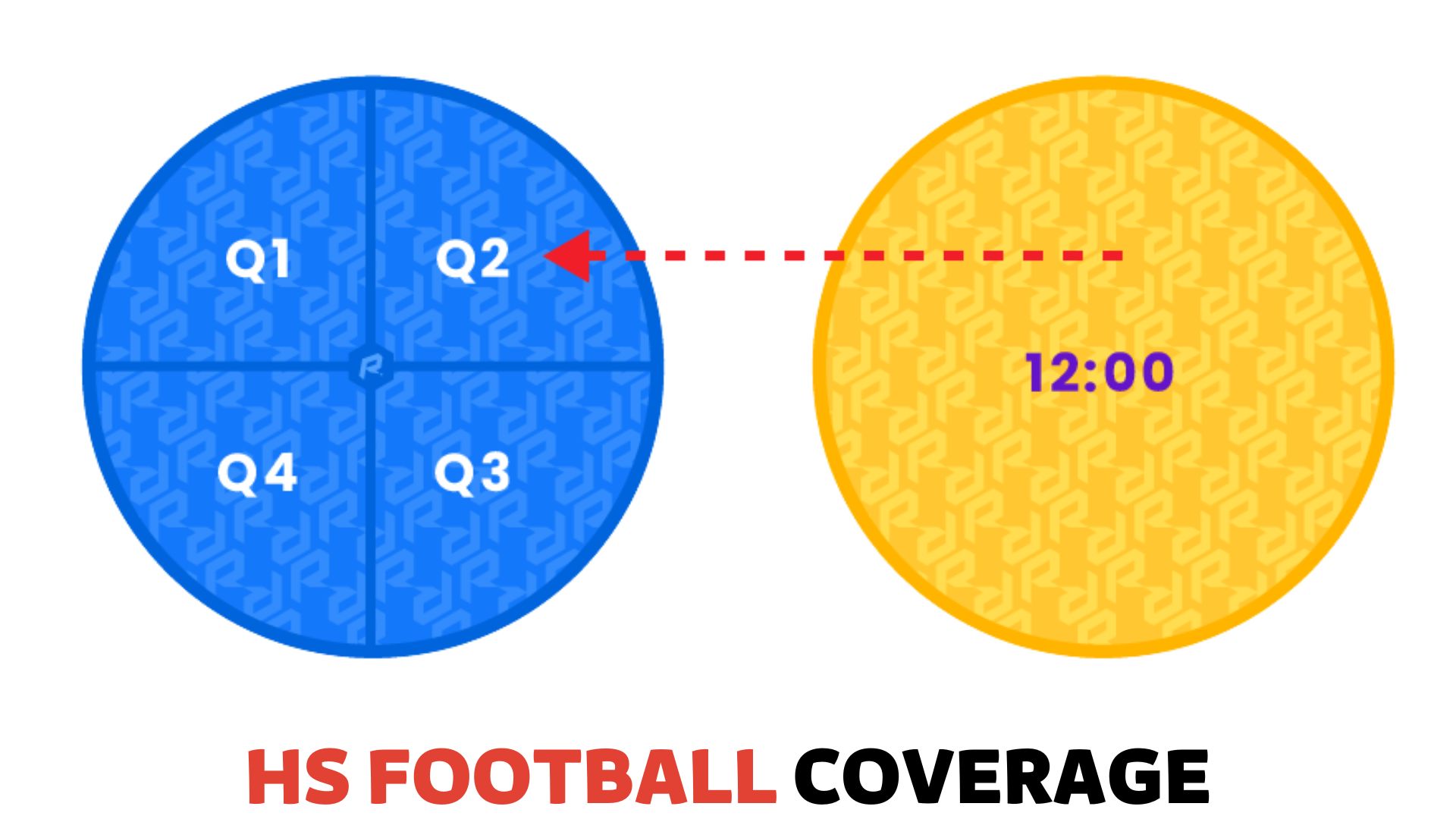
A high school football field is typically 100 yards long and 53.33 yards wide. In addition to the field, there are also end zones that extend 10 yards beyond each goal line.
The dimensions of a high school football field are standardized to ensure consistency across different stadiums and teams.
The field is usually marked with white lines, including yardage markers, hash marks, and a midfield logo. These markings help players and officials navigate the field during games.
The size of a high school football field allows for a fast-paced and exciting game, showcasing the skills and athleticism of the players.
The Standard Size of a High School Football Field
A high school football field typically measures a standard length and width as per regulations. These measurements may vary across different states.
The field’s size is determined to ensure fair gameplay and compliance with sporting guidelines. Each state may have specific regulations, but the typical dimensions are maintained.
The length and width measurements are structured to create a balanced playing area. Such uniformity ensures that all teams have an equal opportunity to showcase their skills and compete on a level playing field.
Whether teams are playing on their home turf or visiting a rival school, the size of the football field remains consistent, emphasizing fair play and fostering healthy competition.
High School Football Stadiums
High school football stadiums vary in size, offering different capacities to accommodate spectators. These venues serve as a platform for games and showcase the school’s pride and spirit.
Typical high school stadiums can accommodate a range of spectators, from a few hundred to several thousand people.
In addition to seating arrangements, these stadiums offer various amenities for both players and spectators. Players can enjoy facilities like locker rooms, showers, and well-maintained fields.
Spectators can find concessions, restrooms, and sometimes even larger event spaces. Each high school stadium has its own unique features, some becoming iconic in the world of high school sports.
These features can range from impressive architectural designs to state-of-the-art scoreboards, creating a memorable experience for everyone involved.
High school football stadiums are an integral part of the community, fostering a sense of camaraderie and excitement.
How Many Players on a High School Football Team?
A high school football team typically has a varying number of players on offense and defense. The exact number can depend on the team’s strategies and formations. Each position on the field serves a specific role, with key players performing important tasks.
From Quarterbacks to Linemen, every player contributes to the team’s overall performance. The number of players on a high school football team may vary, but the focus is always on teamwork, coordination, and individual skills.
Each player has an important role in the game, whether scoring touchdowns or stopping the opposing team’s offense.
High school football is about the number of players and their dedication and effort on and off the field. A cohesive team with well-defined positions and responsibilities is crucial in achieving success on the gridiron.
The Size and Weight of a High School Football
High school footballs come in a variety of sizes and weights. A high school football’s specified dimensions and weight may vary from level to level. Understanding the variations in football sizes for different levels of play is crucial.
The impact of ball size and weight on the game cannot be underestimated. A football’s size and weight can impact how players handle the ball, throw passes, and kick field goals.
High school football players need to use the correct size and weight of the ball to ensure fair gameplay and optimal performance.
The right equipment, including the size and weight of a high school football, plays a significant role in the game.
The Impact of High School Football on the Community
High school football significantly impacts the community, receiving support from fans, parents, and alumni. It cultivates school spirit and enhances engagement within local communities.
The excitement generated by football games fosters a sense of belonging and unity among students and residents.
Moreover, high school football brings economic benefits to the community as local businesses and vendors experience an increase in foot traffic. From concessions to game-related merchandise, these businesses thrive during the football season.
The community’s investment in high school football goes beyond the field, establishing a powerful bond that unites individuals from various backgrounds.
The commitment shown by fans, parents, and alumni contributes to the success of both the team and the community, reinforcing the importance of high school football in fostering unity and support within local neighborhoods.
How Many Fans Attend High School Football Games?
High school football games can attract a significant number of fans. It’s common to see crowds of several thousand people cheering on their favorite teams.
The average attendance numbers for these games vary depending on the location and popularity of the teams involved.
Factors such as the school’s size, the football program’s success, and community support can all influence game attendance. Some high school football games have even set memorable attendance records, with stadiums overflowing with enthusiastic fans. These records often reflect the passion and pride of the local community.
High school football games offer an exciting atmosphere for both players and spectators, creating a sense of unity and school spirit.
Addressing the Physicality of High School Football
High school football is a physically demanding sport that raises safety concerns. To address these concerns, measures have been implemented to prevent concussions and ensure player safety.
Changes in rules and regulations have been made to prioritize player protection. Coaches play a crucial role in safeguarding the health of their players.
They must be knowledgeable about safety protocols and take appropriate actions to prevent injuries. Educating players on proper techniques and enforcing protective gear are essential to reducing the risk of harm.
The safety of high school football players is of utmost importance and should always be a top priority, both on and off the field.
The Importance of High School Football in American Culture
High school football in the United States is more than just a game. It is steeped in tradition, as rivalries and legacies shape the culture. These time-honored rivalries hold great significance, not only for the players on the field but also for the communities they represent.
High school football is a unifying force, bringing people together and fostering a sense of belonging. The whole town rallies around their team, donning school colors and showing their support.
It becomes a social event where families, friends, and neighbors come together, cheer on their local heroes, and create lasting memories.
Through celebrating traditions and legacies, high school football symbolizes pride and identity within the community. It teaches valuable lessons of teamwork, discipline, and perseverance, shaping the lives of those involved both on and off the field.
Whether it be the roaring crowd, the intense rivalries, or the sense of pride, high school football undeniably impacts American culture.
The Future of High School Football
High school football is a sport that has been facing various emerging trends and challenges. These include shifts in participation rates and interest in the sport and the exploration of alternative football formats for safety or inclusivity.
Adapting to societal changes and potential obstacles is crucial for the future of high school football.
As the sport evolves, it is important to consider the size and impact of high school football. With careful consideration and adaptation, high school football can continue to thrive and provide a platform for young athletes to experience the game in a safe and inclusive environment.
It is essential to monitor and respond to emerging trends and challenges to ensure the future success of high school football.
Frequently Asked Questions
Are High School Footballs the Same Size As the NFL?
Yes, high school footballs are the same size as those used in the NFL.
Why Are High School Footballs Bigger Than the NFL?
High school footballs are bigger than NFL balls because they are designed to suit players at different skill levels.
What Size Football Does the NFL Use?
The NFL uses a football with a specific size.
What Football Do They Use in High School?
High schools typically use a regulation-sized football for their games and practices.
How Big is a High School Football Field?
A high school football field is typically 120 yards long and 53.3 yards wide, including end zones.
Conclusion
Overall, understanding the size and scope of high school football is essential to appreciating its impact on the lives of students, schools, and communities.
From the vast stadiums filled with cheering fans to the countless hours of practice and dedication from players, it is clear that this beloved American pastime holds a special place in our hearts.
High school football provides entertainment and excitement and teaches valuable life lessons such as teamwork, discipline, and perseverance. Whether you’re a player, a coach, a parent, or a fan, your passion and love for the game are undeniable.
As we delve into the specifics of high school football, we discover that it is much more than just a game—it’s a symbol of unity, spirit, and tradition.
So, the next time you find yourself watching a high school football game, take a moment to reflect on the significance of the sport and the immense impact it has on both individuals and communities.















